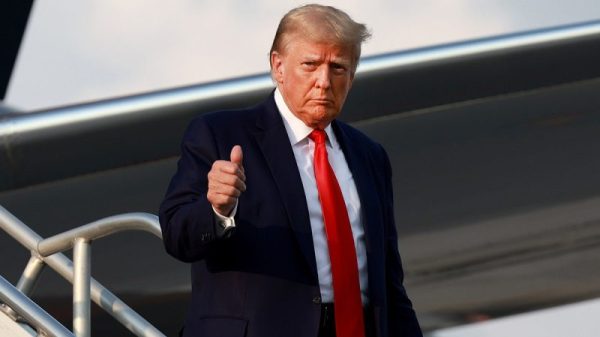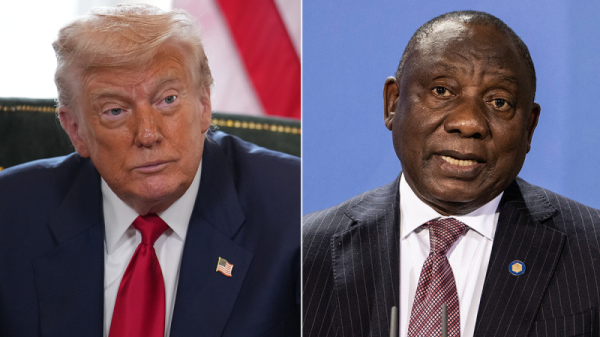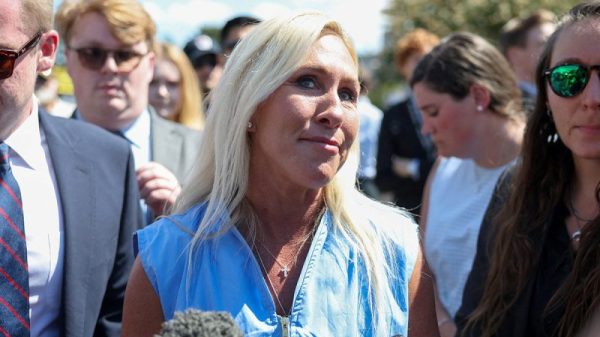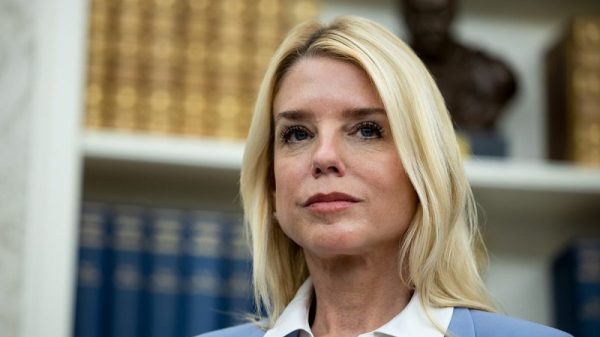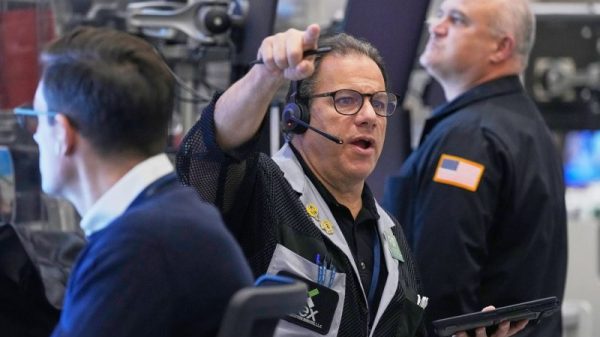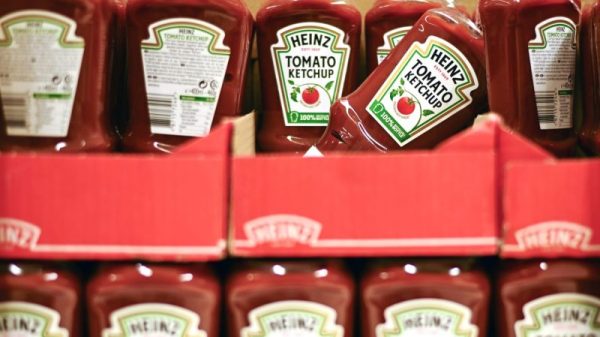Robert F. Kennedy Jr.’s poll numbers probably remain inflated, as he transitions from a primary challenge against President Biden to an independent candidacy. Not only do third-party candidates often poll much better than they ultimately perform, but Kennedy’s famous heritage gives him name recognition that few others enjoy.
That said, it’s evident right now that third-party candidates as a whole could be on track for some of their best and potentially most consequential performances in recent presidential election history.
A handful of quality polls conducted since Kennedy changed his affiliation earlier this month show him taking as much as 16 percent of the vote (according to both Fox News and Marist College polls). And when the polls include Kennedy and liberal activist Cornel West, they total as much as 17 percent of the vote — holding both major-party candidates below 40 percent in a Suffolk University poll this week.
Those are some of the best polls we’ve seen for third-party candidates since Ross Perot, the last major one to actually compete in a presidential race, in the 1990s.
The best electoral performances for third-party candidates in the 21st century came in 2016, when the two major-party candidates ceded nearly 6 percent of the vote to Libertarian Gary Johnson, Green Party candidate Jill Stein, independent Evan McMullin and others. The best Johnson polled in that campaign was 13 percent, and the best combined total for him and Stein was 18 percent in a July 2016 CNN poll.
In 2000, Green Party candidate Ralph Nader flirted with double digits in some polls before fading late in the campaign.
Kennedy’s and West’s polls right now — West also polled as high as 9 percent in Fox’s survey when Kennedy wasn’t included — hark back to 1996. At this point in that cycle, Perot polled around 15 percent, while a hypothetical poll testing Jesse Jackson put him at 8 percent when he was included without Perot in the race.
(Both had significant name recognition; Perot had run well in 1992, and Jackson had previously run twice for president as a Democrat.)
You have to go back further than that to find third-party candidates polling better than the current crop does at this early juncture. Perot in 1992 sometimes actually polled as the leader, before taking 19 percent in the general election.
Before that, John Anderson in 1980 polled as high as the mid-20s before ultimately taking a little less than 7 percent.
The combined data suggest that these third-party candidates have more votes available to them than at any time since the mid-1990s. The question is whether they can take advantage.
One factor working in their favor is the two major-party candidates. It’s no coincidence that the best third-party results in the 21st century came in 2016. That was in large part because exit polls showed only 4 in 10 Americans liked either Donald Trump or Hillary Clinton, making them two of the most unpopular major-party nominees in modern history.
And where do Trump and Biden stand right now? With only about 4 in 10 Americans liking each of them.
(We could also be getting a sense of Biden’s political strength thanks to the newly announced primary challenge from Rep. Dean Phillips of Minnesota.)
Johnson and Stein also performed as well as they did largely despite themselves; both were broadly unpopular heading into the election. It would seem possible that a more well-liked alternative could take advantage of the situation even more.
Another factor — related to that point — is that there could quite simply be a lot of third-party options. In addition to Kennedy and West running as independents, No Labels is still considering fielding a bipartisan ticket, and that doesn’t even account for the Libertarian and Green parties, which generally make up most of the top non-major-party vote totals. So even if Kennedy’s vaccine claims and West’s Israel criticisms make them not palatable to free-agent voters, there could be other options who are.
What’s clear is that this is all looking potentially significant. These candidates don’t even need to sniff where they currently are in the polls to have an impact on the race. Nader might have swung the 2000 race — though that’s disputed — simply by taking less than 2 percent of the vote in Florida. And while theories that Johnson and Stein cost Clinton the 2016 race aren’t borne out by the data, it’s hardly inconceivable that they could have. Our elections are just very close these days.
All of which augurs a significant and concerted battle to define these third-party candidates and make sure they don’t wind up costing your side. And that battle has already begun.
Robert F. Kennedy Jr.’s poll numbers probably remain inflated, as he transitions from a primary challenge against President Biden to an independent candidacy. Not only do third-party candidates often poll much better than they ultimately perform, but Kennedy’s famous heritage gives him name recognition that few others enjoy.
That said, it’s evident right now that third-party candidates as a whole could be on track for some of their best and potentially most consequential performances in recent presidential election history.
A handful of quality polls conducted since Kennedy changed his affiliation earlier this month show him taking as much as 16 percent of the vote (according to both Fox News and Marist College polls). And when the polls include Kennedy and liberal activist Cornel West, they total as much as 17 percent of the vote — holding both major-party candidates below 40 percent in a Suffolk University poll this week.
Those are some of the best polls we’ve seen for third-party candidates since Ross Perot, the last major one to actually compete in a presidential race, in the 1990s.
The best electoral performances for third-party candidates in the 21st century came in 2016, when the two major-party candidates ceded nearly 6 percent of the vote to Libertarian Gary Johnson, Green Party candidate Jill Stein, independent Evan McMullin and others. The best Johnson polled in that campaign was 13 percent, and the best combined total for him and Stein was 18 percent in a July 2016 CNN poll.
In 2000, Green Party candidate Ralph Nader flirted with double digits in some polls before fading late in the campaign.
Kennedy’s and West’s polls right now — West also polled as high as 9 percent in Fox’s survey when Kennedy wasn’t included — hark back to 1996. At this point in that cycle, Perot polled around 15 percent, while a hypothetical poll testing Jesse Jackson put him at 8 percent when he was included without Perot in the race.
(Both had significant name recognition; Perot had run well in 1992, and Jackson had previously run twice for president as a Democrat.)
You have to go back further than that to find third-party candidates polling better than the current crop does at this early juncture. Perot in 1992 sometimes actually polled as the leader, before taking 19 percent in the general election.
Before that, John Anderson in 1980 polled as high as the mid-20s before ultimately taking a little less than 7 percent.
The combined data suggest that these third-party candidates have more votes available to them than at any time since the mid-1990s. The question is whether they can take advantage.
One factor working in their favor is the two major-party candidates. It’s no coincidence that the best third-party results in the 21st century came in 2016. That was in large part because exit polls showed only 4 in 10 Americans liked either Donald Trump or Hillary Clinton, making them two of the most unpopular major-party nominees in modern history.
And where do Trump and Biden stand right now? With only about 4 in 10 Americans liking each of them.
(We could also be getting a sense of Biden’s political strength thanks to the newly announced primary challenge from Rep. Dean Phillips of Minnesota.)
Johnson and Stein also performed as well as they did largely despite themselves; both were broadly unpopular heading into the election. It would seem possible that a more well-liked alternative could take advantage of the situation even more.
Another factor — related to that point — is that there could quite simply be a lot of third-party options. In addition to Kennedy and West running as independents, No Labels is still considering fielding a bipartisan ticket, and that doesn’t even account for the Libertarian and Green parties, which generally make up most of the top non-major-party vote totals. So even if Kennedy’s vaccine claims and West’s Israel criticisms make them not palatable to free-agent voters, there could be other options who are.
What’s clear is that this is all looking potentially significant. These candidates don’t even need to sniff where they currently are in the polls to have an impact on the race. Nader might have swung the 2000 race — though that’s disputed — simply by taking less than 2 percent of the vote in Florida. And while theories that Johnson and Stein cost Clinton the 2016 race aren’t borne out by the data, it’s hardly inconceivable that they could have. Our elections are just very close these days.
All of which augurs a significant and concerted battle to define these third-party candidates and make sure they don’t wind up costing your side. And that battle has already begun.

